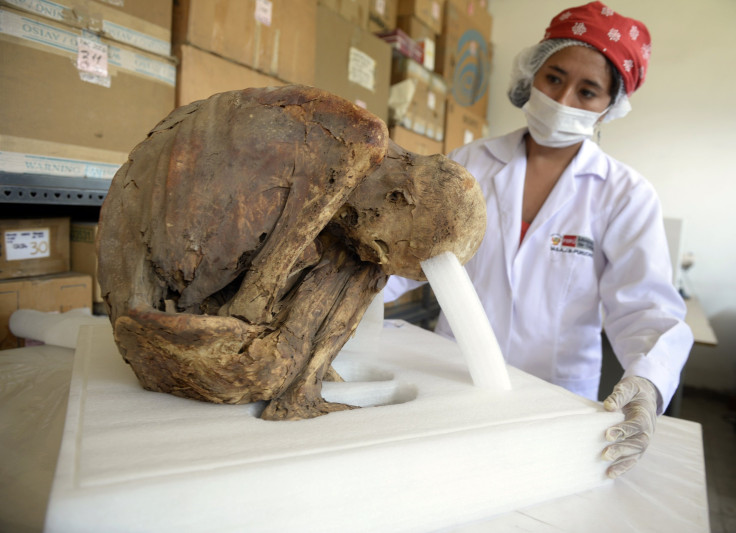Peruvian 3-Fingered Mummies Could Be ‘Extraterrestrial’ Or ‘Bio Robots,’ Russian Scientists Say

The anatomical structure of the mummies discovered near Nazca, in southern Peru, last year is not human, Russian scientists who were studying the case claimed.
A team of researchers from St. Petersburg, who collected the tissue samples in Peru and brought them back to Russia to study, have determined that the mummies — with elongated heads and three fingers on each hand — possess 23 chromosomes that are human but lack the human anatomy.
One of the mummies is named Maria, a 5th-century woman believed to predate the arrival of Europeans in America. Scientists believe that she belonged to a race that was wiped from existence due to a flood or a comet strike.
Apart from Maria, the scientists are also studying a nine-year-old mummy called Vavita, and four other male mummies.
“Right now we are making a detailed analysis to see if the shape of the position of all the chromosomes, of all the amino acids, coincides with ours,” Professor Konstantin Korotkov of the Russian National Research University said, 9 News reported.
“Each of the little mummies has two arms, two legs, a head, a pair of eyes and a mouth. Tomographic scans reveal their skeletons. The tissue has biological nature and their chemical composition indicates that they are humans,” he added. “Their DNA features 23 pairs of chromosomes, just like we have. All the four of them are males, each with a Y-chromosome.”
However, what is often apparent is not so in reality. “They appear human but they are not. Their anatomic structure is different. They could be extraterrestrials or bio robots,” Korotkov said.
Nevertheless, determining the composition of Maria’s DNA and that of the other mummies will help the scientists pinpoint their nationalities. Korotkov said the mummies could very well be from some ancient tribe or an extraterrestrial race.
"They were three-fingered and this genetic feature could make itself evident in future generations,” Korotkov said. “By the way, three-fingered creatures can be seen on petroglyphic drawings found in Peru.”
Apart from the odd-shaped rib cage — rounded off with some semi-circular bones — the mummies also had some unusual dental structures.
“Most surprisingly, the mouth cavities are there but the lower jaws are not flexible and present a single whole with the rest of the skull,” Korotkov said.
The fact that Maria and other mummies were far better preserved than other excavated mummies found around the world made the job of conducting research on them easier for the scientists.
According to the researchers, Maria came embalmed in a cadmium chloride white powder, whose anti-bacterial properties helped preserve the mummy in a near-perfect state for so many years.
The Russian researchers are working closely with their Peruvian counterparts to study the mysterious, ancient mummies. Korotkov said he hopes the Peruvian government will allow them to bring back the mummies in Russia in the future, which would help them break their DNA code, RT reported.
However, Korotkov’s theories have been widely criticized in the past by the scientific community. In 2008, he claimed to have invented a camera that could photograph the human soul — a claim that has since been debunked by a number of experts.
Similarly, Korotkov’s claim that the three-fingered mummies might have descended from an alien race has been questioned by British alien expert Nigel Watson, the author of the "UFO Investigations Manual."
“I think the whole saga of finding these mummies is laughable and they are very probably fakes,” he told Mail Online. “The new evidence does indicate the Maria is human, the only strange thing is that she has an unusual rib structure. This is probably because she is a so-called bone montage made by fakers.”
© Copyright IBTimes 2024. All rights reserved.






















